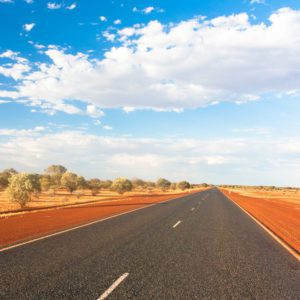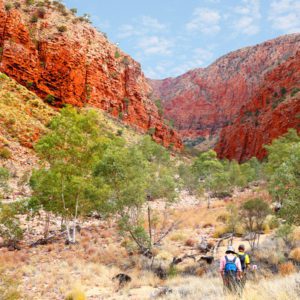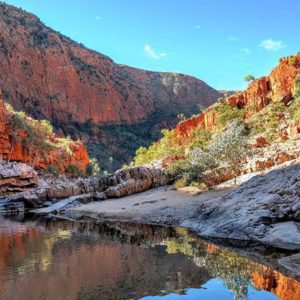Sure, you expect spectacular landscapes, nights spent beneath the stars and long days on the trail, but these are parts of the Larapinta Trail you might not have foreseen.
You can thank Alan Ginns. In the 1980s, this national park planner saw the potential of connecting what then were small, disconnected reserves in the West MacDonnell Range, or Tjoritja in Arrernte, with a hiking trail. He sought permission to enter some of the Arrernte people’s sacred sites then set out walking, mapping out the trails, often on his own, over years. Then, initially with the help of low-security prisoners from Alice Springs, the Larapinta Trail was constructed and opened in 1988. Now about 5,000 hikers take it on each year. These are some of the unexpected features they get to see along the way.
Communication Heritage
You expect this territory to be wild and untouched, but at the start of the Larapinta Trail, you’ll be greeted by the sight of the Old Telegraph Station, built in 1871 as part of the 3,000-kilometre Adelaide to Darwin Overland Telegraph Line. It’s one of 12 along the line, but this one – which also served as a schoolhouse – is the best preserved.
The Only Way is Up
Of course, you know you’ll see vivid colours when you hit the trail. Those incredible, never-ending cerulean big skies. The grey-green of the eucalyptus. The endless black of the night sky. But the burnt orange that surrounds you at Standley Chasm, lit up to red when the sun is overhead, is something else again. Those cliffs, just metres apart in places, of soaring sandstone, are immense and humbling. This was once a tributary of the Finke River, and it’s still an important women’s cultural site for the Arrernte people. Thought to have been named after the first school teacher in Alice Springs, Ida Standley, it’s also known as Angkerle Atwatye. Its depth has caused a unique microclimate where you can see ancient cycads and pebbles and rocks at your feet that have been washed downstream from miles away over thousands of years. It really is the jewel of the Larapinta Trail.
Splash Out
The Red Centre’s rainy period, such as it is, takes place over summer. Once the rains have passed, filling the many waterholes in the MacDonnell Ranges, the walkers once again return to the Larapinta Trail to enjoy their legacy. Refreshing waterholes and gorges filled with sparkling aqua pura are like manna for tired hikers. You’ll do wet crossings over rivers and strip off to soak away the dust. A trek along Ormiston Gorge (Kwartatuma) passes a huge waterhole, up to 14 metres deep in parts, making it the perfect place to go wild swimming. But one of the most peaceful places on the entire Larapinta Trail is Serpentine Gorge (Ulpma), where the waterhole is shaded by arching red river gums.
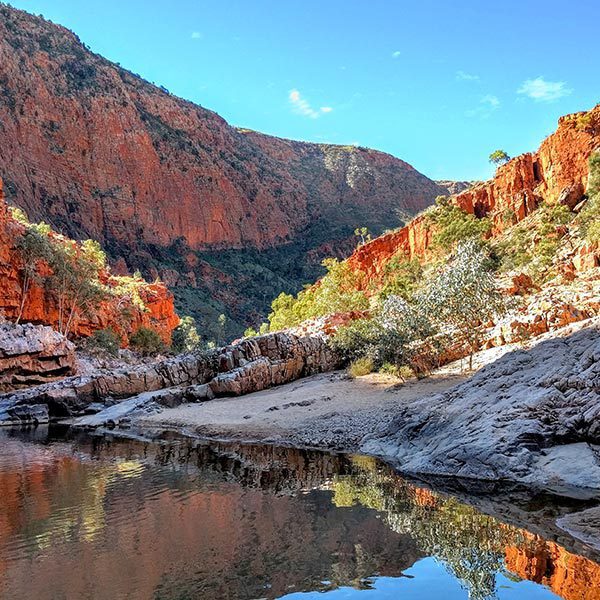
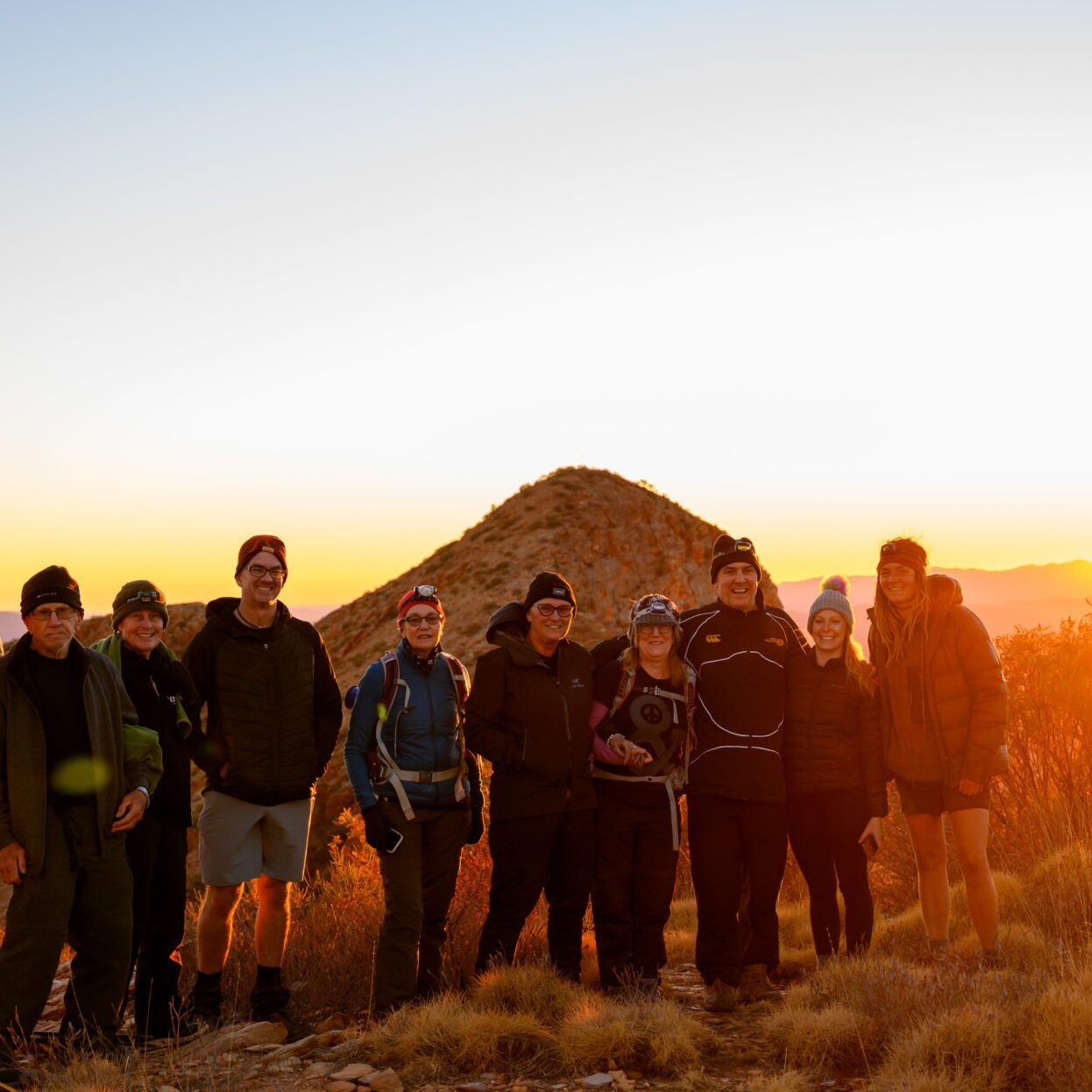
Coloured Cliffs
It looks as though the rock has been painted then weathered over time, but those colours you can see are minerals, mined and used by Indigenous people for generations. The Ochre Pits are one of the highlights of the Larapinta Trail. Mixed with animal fats (emu, possum, even goanna) or water, this coloured earth was used for many different purposes. White and yellow ochre were used for ceremonial body adornment; red, when combined with fat, coated weapons and tools to protect them from the elements. What you probably don’t know was that ochre was also used as medicine, mixed with eucalyptus leaves to fend off colds. The ochre is of such high quality at this site, the local Aboriginal men would often trade it for other necessities with neighbouring clans.
The Big Push
As you approach, it looks like a wave cresting over the landscape. Geological forces have pushed granite slabs up to a 45-degree angle to form Euro Ridge. But you’re not just going to stare up at it in wonder, you’re going to climb it. When you get to the top – no mean feat, by the way – the views across the West MacDonnell Ranges and Alice Springs will have you reaching for your camera.
Wild, Wild Life
If someone was to ask what animals you might see on the Larapinta Trail, you’d probably reply ‘snakes’. You’re not wrong. They are there, but most slither off after feeling the tromping of heavy hiking boots long before you see them. The spring-fed pools of Finke Gorge and waterhole at Simpsons Gap (Rungutjirpa), however, attract all kinds of wildlife. Look closely near the water’s edge and you might see frogs; fish, like the spangled grunter, live in the pools. Be quiet and stare up into the cliffs rising around you and you’ll likely spy rock wallabies and goannas. Then there are the dingoes, who might watch from afar or even venture into camp. Birdwatchers, meanwhile, will do well to linger on the banks of the Finke River, where they might watch freckled ducks and pelicans on the water, and herons and egrets sifting through the mud for their next meal. There’s a lot more life in this harsh environment than you might have imagined.
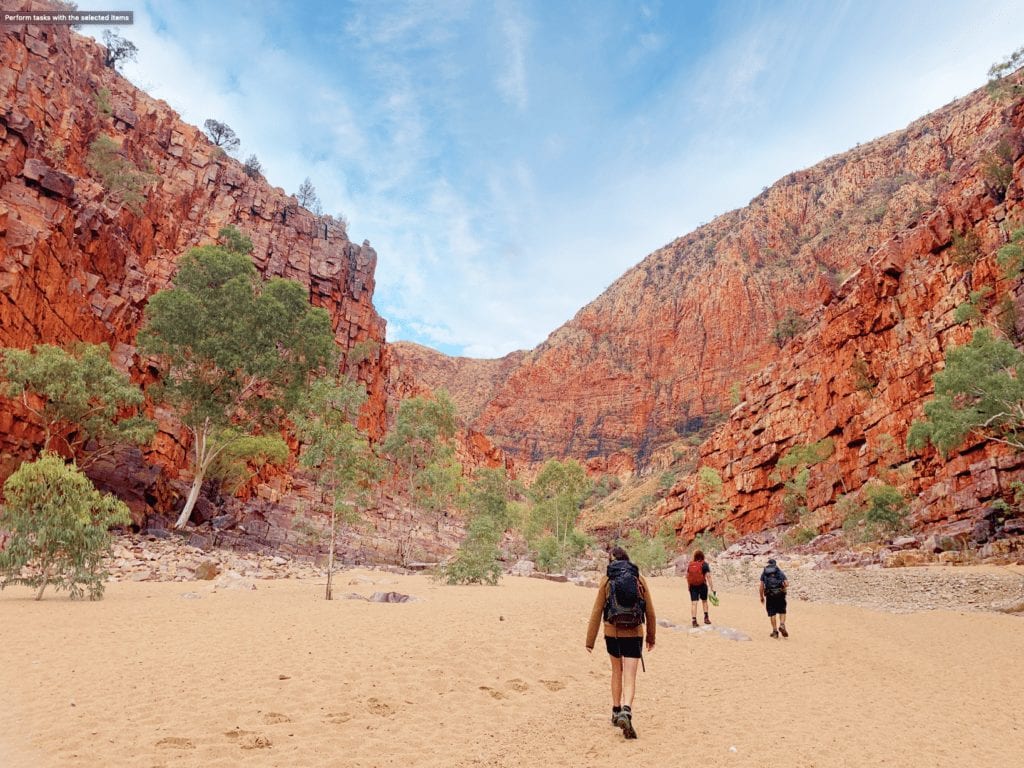
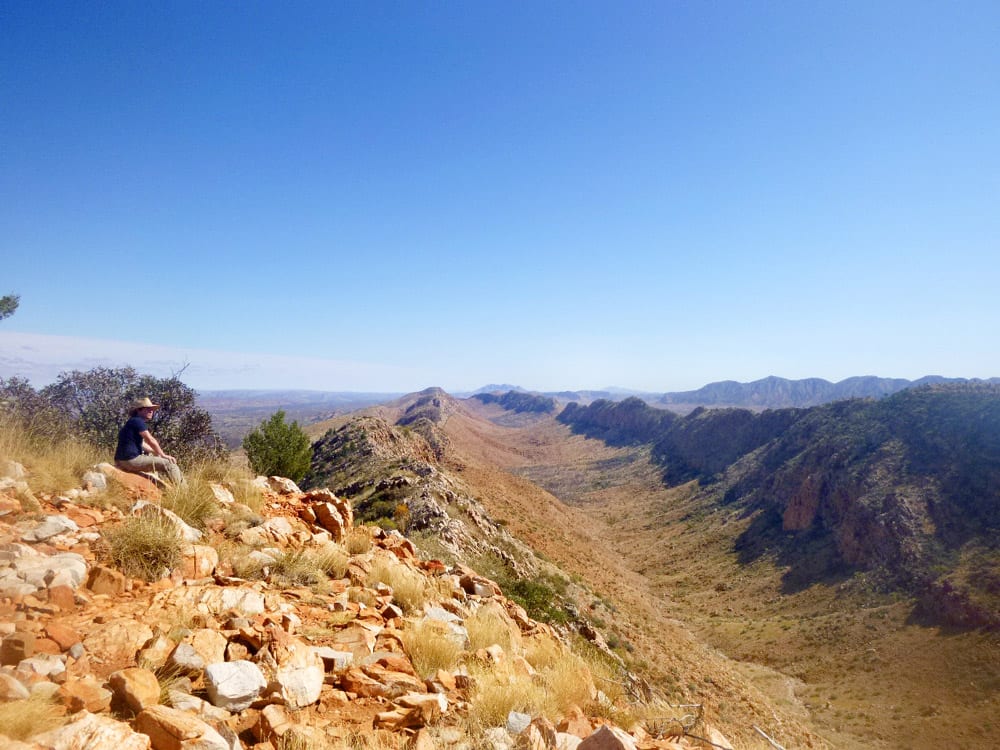
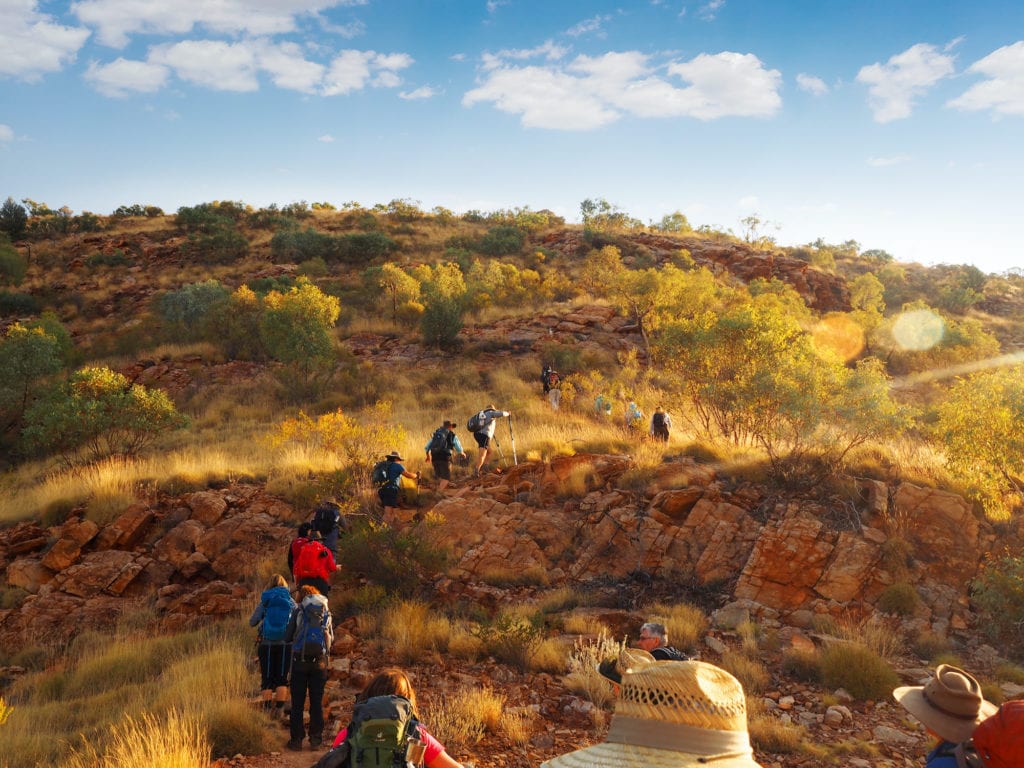
Ready to take on the Larapinta Trail and experience these incredible sites for yourself? We’ve got you covered.
Liked this article? Here's some more you might like:

